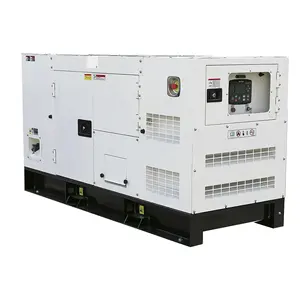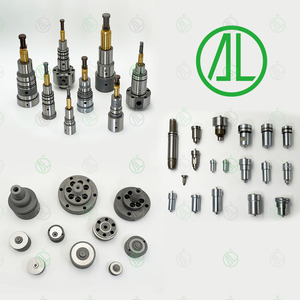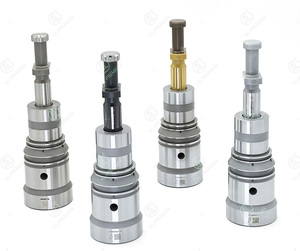(18 products available)
































































Ruston engines are powerful and robust engines renowned for their reliability and performance in various industrial applications. These engines come in different types to suit specific needs and requirements. Here are some types of Ruston engines:
1. Ruston diesel engines:
Ruston diesel engines are known for their durability and high torque output, making them suitable for heavy-duty tasks. The engines are designed with robust construction, offering reliability and low maintenance requirements. Additionally, they have high fuel efficiency and can operate at low speeds with consistent power delivery.
2. Ruston gas engines:
Gas engines are designed to produce lower emissions and are often used in applications where environmental considerations are essential. The engines have high thermal efficiency, which reduces fuel consumption. Also, Ruston gas engines have high power density and can be easily integrated into various industrial processes.
3. Ruston dual-fuel engines:
Ruston dual-fuel engines use both diesel and natural gas, offering flexibility and reduced emissions compared to traditional diesel engines. These engines have lower operating costs due to reduced fuel consumption and emissions. Additionally, the engines have improved torque characteristics and are suitable for various applications, including power generation and propulsion.
4. Ruston electric engines:
Electric engines are known for their low noise operation and are suitable for applications requiring precise control and high reliability. These engines have high starting torque and are designed for continuous operation with a high overload capacity. Additionally, Ruston electric engines require minimal maintenance and have integrated control systems for precise speed and torque control.
5. Ruston locomotive engines:
Ruston locomotive engines are designed for railway locomotives, offering high power output and efficiency. The engines are designed to be lightweight and compact, which is suitable for rail operations. Additionally, Ruston locomotive engines have high fuel efficiency and are renowned for their reliability and durability in various environmental conditions.
1. Regular oil changes
This entails changing the engine oil after a predetermined amount of time or mileage has been attained. The old oil and any impurities or particles that may have been collected in it are expelled. Maintaining oil changes regularly helps maintain the engine's smooth operation and reduces wear and tear. It also helps to maintain the oil's ability to lubricate and protect engine components from rust and corrosion.
2. Air filter replacement
This involves changing the air filter after a predetermined amount of time or mileage has been attained. The engine's airflow is hampered by a clogged air filter, which causes the Ruston engine to work harder and use more fuel. The engine may also ingest dirt and other particles, harming its interior components. Replacing the air filter improves engine performance and fuel efficiency. It also prevents the engine from using more effort and fuel.
3. Cooling system flush
This involves draining all coolant from the engine after a predetermined amount of time or mileage has been reached and replacing it with fresh coolant. This process removes any contaminants or deposits that may have built up in the cooling system. A cooling system flush helps to maintain the cooling system's efficiency and prevent overheating, which can damage the engine.
4. Valve clearance adjustment
This involves inspecting and adjusting the engine valve clearances after a predetermined mileage or time has been reached. This is done to make sure the valves open and close properly and to prevent any damage to the valve train components. The valve clearances are measured using a feeler gauge, and if necessary, adjustments are made using the appropriate tools. This ensures the Ruston engines maintain optimal performance and efficiency.
5. Injector cleaning
This involves cleaning the injectors after a predetermined mileage or time has been reached. This is done to make sure they spray fuel into the combustion chambers in the right way and to stop any build-up of dirt or deposits that could affect how well they work. The injectors are cleaned either with a special cleaning solution or with a cleaning machine. This keeps the injectors working well and makes sure the Ruston engine gets the right amount of fuel.
Choosing the right Ruston engines for a specific application requires careful consideration of various factors to ensure optimal performance, reliability, and efficiency. Here are some key factors to consider when choosing a Ruston engine:
Some smaller and simple engine constructions are doable for DIYers. If the service is beyond DIYers' competence, encourage them to consult a professional. If attempting a DIY engine repair, ensure they have the right tools, workspace, and repair manual. If the engine requires major repairs, consider the cost of a rebuild versus the cost of a replacement.
Below are the steps on how to DIY and replace Ruston engines:
Identify the Engine Problem
Inspect the engine carefully to identify the problem. Check the engine's starting system, including the battery, starter motor, and ignition system. Also, examine the engine's fuel supply system, including fuel lines, filters, and fuel injectors or carburetor. Additionally, check the engine's air supply system, which includes air filters and the intake system. Look at the engine's exhaust system, which includes exhaust restrictions and blockages. Inspect the engine's internal components, like compression, wear, or damage. Also, consider external factors like temperature and altitude that may affect engine performance.
Gather Necessary Tools and Materials
Get the right tools for engine maintenance and repair. These include socket and wrench sets, screwdrivers, pliers, torque wrenches, and specialty engine tools. Prepare diagnostic tools, such as a multimeter, compression tester, or vacuum gauge. Stock up on replacement parts like engine oil, filters, spark plugs, fuel injectors, and gaskets.
Engine Disassembly
Follow the engine disassembly process according to the manual. Take apart the engine carefully and organize the components and hardware. Inspect the disassembled parts for wear, damage, or defects and take note of them.
Engine Reassembly
Reassemble the engine following the manual instructions. Use new gaskets and seals where necessary, and tighten bolts and nuts to the recommended torque specifications. Once the engine is reassembled, perform a leak and air pressure test to ensure it's rust free and functioning properly.
Q1: How can one tell a Ruston engine is faulty?
A1: The engine will not run or have difficulty running. If it runs, it has an irregular or unstable operation. Proper engine operation produces a normal sound, but a faulty engine has an unusual sound. The engine may also show visible damage, such as cracks or leaks. A faulty engine has a noticeable drop in power output and may overheat. Faulty engines have increased fuel consumption and excessive smoke or emissions. Additionally, they have warning indicators on the control panel.
Q2: How do you maintain a Ruston engine?
A2: Regular maintenance, such as oil changes, is essential. Use high-quality lubricants and engine oils. Keep the cooling system in good condition and at the right level. Keep the intake and combustion systems clean. Keep the fuel system clean by using high-quality fuel and additives if necessary. Monitor the exhaust system for leaks and damage. Regularly inspect and replace worn engine parts such as belts and filters. Ensure all engine systems are correctly calibrated and adjusted.
Q3: What is the warranty period for a Ruston engine?
A3: The warranty period varies depending on the manufacturer and supplier. Generally, the warranty period is one year. Some suppliers may offer a two-year warranty period.
Q4: What are the common spare parts needed for engine maintenance? A4: Buyers should purchase spare parts such as filters, gaskets, spark plugs, and other minor components. It is also advisable to check with the engine supplier to know which parts are needed for maintenance.